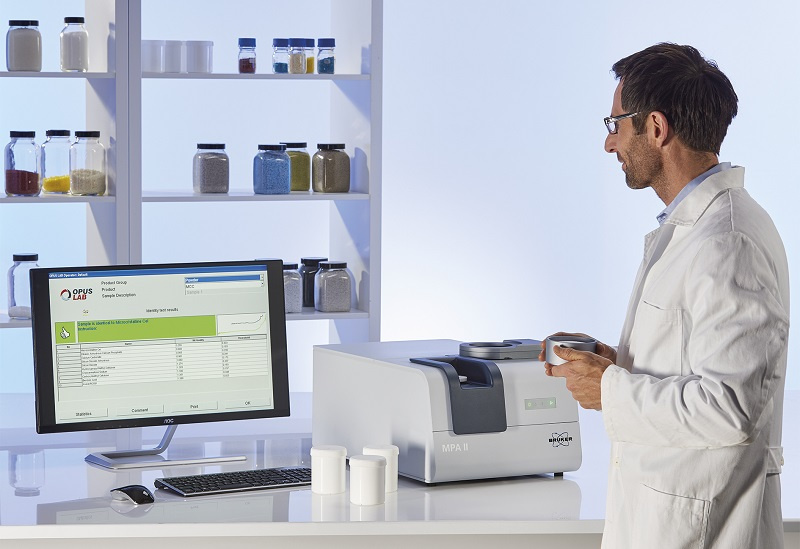
Food Analysis and Quality Control with FT-NIR Spectroscopy
Food quality requirements are steadily growing and the need for rapid, but user-friendly methods to monitor and ensure food integrity is on the rise worldwide. FT-NIR has proven to be a powerful technology for the control of raw materials as well as intermediate and finished products along the production chain.
Only one measurement, which usually takes less than 30 s, can simultaneously answer several analytical questions. It offers a practical alternative to the time-consuming, wet chemical methods and chromatographic techniques. FT-NIR is non-destructive and requires no sample preparation or
How does it work?
FT-NIR spectroscopy simply measures the absorption of near-infrared light of the sample at different wavelengths. The recorded NIR spectrum is characterized by overtones and combinations of the fundamental molecular vibrations of molecules containing C-H, N-H or O-H groups. This is why NIR spectroscopy is first choice for the analysis of organic materials in the food and beverage industry.
Also, the sample pretreatment is eliminated, which saves a lot of work and eliminates a common source of error. From the high information content of the spectra, several parameters can be determined simultaneously. In the food sector, the most important parameters such as fat, protein, moisture / dry matter, lactose and even inorganic parameters like salt and the ash content can be analyzed as well as many more specialized parameters.
Applications
Modern multi-purpose spectrometers combine different measurement techniques in one system and thus cover a wide range of applications in food analysis, including not only dairy, oil and meat applications but also flour & milling, confectionary, condiments and beverages. Dedicated sampling accessories can be adapted for any type of liquid, powdered, semi-solid or solid sample.
This opens an array of applications, making FT-NIR a valuable tool for raw materials inspections in the warehouse, in process-control and final quality testing.
- Raw Materials Identification:
Every organic material has a unique NIR spectrum – like a fingerprint. Therefore, NIR is widely used to test if a raw material is identical with the expected substance (identification) and if it meets its dedicated specifications (authentication). - Multi Component Quantitative Analysis:
The amount of light absorbed by the sample depends on the concentrations of its ingredients. Since the NIR spectrum contains the analytical information of every component simultaneously, the operator receives all quantitative information by collecting just one spectrum. - In-line Process Control:
With fiber optic probes, the point of analysis can be inserted directly into the reactor or container. Specific quality parameters can be controlled in real-time directly in the process, leading to shorter cycle times, better product quality and less out-of-spec batches.
Fast and Easy Analysis at Low Cost
Especially in comparison to wet chemical analysis, NIR offers practical as well as economic advantages:
- no sample preparation required, no waste
- simple sample presentation and handling
- no typical user errors as with classic methods
- analysis of several components in less than a minute
- suitable for solid, semi-solid and liquid samples
FT-NIR spectroscopy is a powerful tool for the food industry. The fast and reliable analysis results help to optimally control raw materials, production processes and finished products. It is the tool of the future and already replaces many of the slower, especially wet-chemical analytical methods.
The MPA II combines different measurement techniques in one system for the analysis of liquid, semi-solid and solid samples.
Measurement of edible oils & fats in the sample compartment of the spectrometer
Analyzing grated chhese on the integrating sphere of the MPA II.
For other agricultural products and services, click here.












